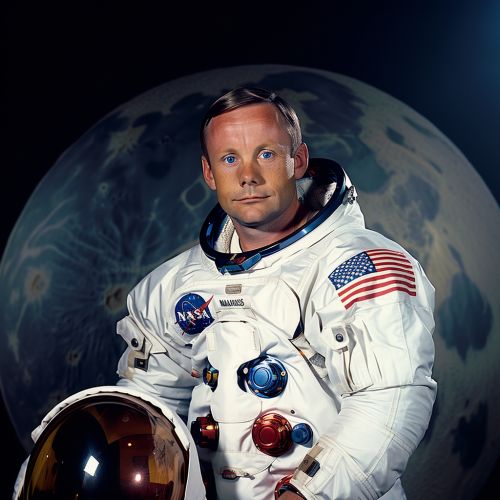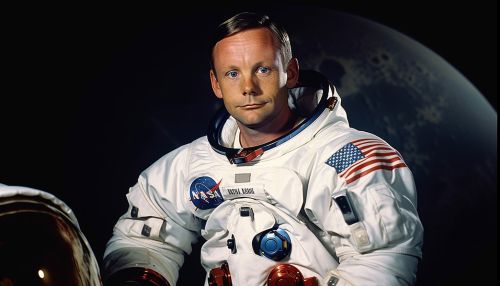Neil Armstrong
Early Life
Neil Alden Armstrong was born on August 5, 1930, in Wapakoneta, Ohio. He was the eldest of three children of Stephen Koenig Armstrong and Viola Louise Engel. His father worked as an auditor for the Ohio state government, which led to the family moving around the state repeatedly. By the time he turned 14, Armstrong had lived in 20 different towns across Ohio.
Education
Armstrong developed an interest in flying at a very young age. He took his first airplane ride in a Ford Trimotor, also known as the "Tin Goose," when he was just six years old. This experience sparked a lifelong passion for aviation. Armstrong pursued his interest in flying by taking flying lessons at the county airport near Wapakoneta. He earned his student flight certificate on his 16th birthday, even before he got his driver's license.
Armstrong attended Blume High School in Wapakoneta, where he was active in various extracurricular activities. He was a member of the Boy Scouts and attained the rank of Eagle Scout. After graduating from high school in 1947, Armstrong received a scholarship from the U.S. Navy. He enrolled at Purdue University, where he began studying aeronautical engineering.
In 1949, Armstrong was called to active duty with the U.S. Navy. He served as a naval aviator during the Korean War, flying 78 combat missions in Grumman F9F Panther jets. Armstrong left the Navy in 1952 and returned to Purdue to complete his degree.


NASA Career
In 1955, Armstrong joined the National Advisory Committee for Aeronautics (NACA), which later became the National Aeronautics and Space Administration (NASA). He served as a research pilot at the High-Speed Flight Station (now the Neil A. Armstrong Flight Research Center) at Edwards Air Force Base in California. During his tenure, he flew many high-speed aircraft, including the X-15, which could reach a top speed of 4,000 miles per hour.
Armstrong was selected as an astronaut by NASA in 1962. He served as the command pilot for the Gemini 8 mission in 1966, which accomplished the first successful docking of two vehicles in space. However, the mission had to be cut short due to a critical system failure.
Apollo 11
Armstrong's most significant contribution to space exploration came in 1969 when he served as the mission commander for Apollo 11, the first manned mission to land on the moon. On July 20, 1969, Armstrong became the first human to set foot on the lunar surface. He famously described the event as "one small step for [a] man, one giant leap for mankind."
Later Life and Death
After retiring from NASA in 1971, Armstrong accepted a position as a professor of aerospace engineering at the University of Cincinnati. He remained in this role until 1979. Armstrong served on the boards of several companies, including Learjet and Cinergy. He also served as the chairman of Computing Technologies for Aviation from 1982 to 1992.
Armstrong died on August 25, 2012, at the age of 82, following complications from coronary artery bypass surgery. His legacy as a pioneering astronaut and the first man to walk on the moon continues to inspire generations of scientists, engineers, and explorers.
